Veneers in Berlin
Search and Compare the Best Clinics and Doctors at the Lowest Prices for Veneers in Berlin

Find the best clinics for Veneers in Berlin
With Medijump you can browse 4 facilities offering Veneers procedures in Berlin. The cheapest price available is $586 in Berlin
Veneers in Germany
Price: $ 586
Veneers in Berlin
Price: $ 586
Veneers in Hildesheim
Price: $ 1,634
Vietnam offers the best prices Worldwide
Price: $ 1
From 18 verified reviews
Alexandra Melendez, 14 August 2020
Dr. Dammert is a very sensitive and good dentist. I've been a scared patient since childhood and he knew exactly what to do. He took enough time to explain every step - and he was always responsive to me. The practice looks very classy and modern. The team around Dr. Dammert is very nice and extremely welcoming. You feel instantly at ease, just like when you visit reluctant dentists - this particular practice gives you - not necessarily the feeling of being at the doctor: the team is dressed in noble dark tones and the classic doctor flair has been blown away. I can this practice and the work of Dr. Dammert warmly recommend. It was a very good experience and I like to remain a patient here. Who knows, soon the addition "fear" patient is missing. Thanks to the team and Dr. Dammert.
From 12 verified reviews
Victoria Donke, 13 June 2020
Best doctor! Extremely competent and human at the same time!
From 47 verified reviews
Hans-Joachim Kleine, 10 September 2020
After 8 years, I can state that it was worthwhile to have a basic renovation with implants that lasted several months. Since then I have been free of complaints and have got a completely new attitude towards life. I can get treatment from Dr. Highly recommend Markus Nowak and the team. Even if it involves a financial contribution of your own, this investment in your own health pays off and pays off in any case. Good job! And once again at this point: Warmest thanks and all the best!
Praxis Fürth-City, located in Bismarckstrasse, Berlin, Germany offers patients Veneers procedures among its total of 38 available procedures, across 4 different specialties. Currently, there's no pricing information for Veneers procedures at Praxis Fürth-City, as all prices are available on request only, whilst the national average price is approximately $1,446. There are many specialists available at the Hospital, with 4 in total, and they are not accredited by any recognized accreditations institutes
Compare Before & After Photos of _procedure_photos.phpVeneers
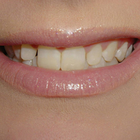

Front view
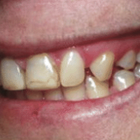
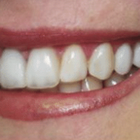
Half-side view
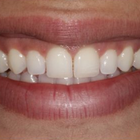
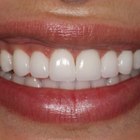
Front view
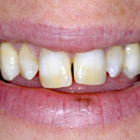
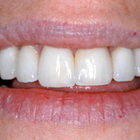
Front view
WHY US?
At Medijump, we're making medical easy. You can search, compare, discuss, and book your medical all in one place. We open the door to the best medical providers worldwide, saving you time and energy along the way, and it's all for FREE, no hidden fees, and no price markups guaranteed. So what are you waiting for?

Free

Best Price

Widest Selection

Risk-Free
What you need to know about Veneers in Berlin

Dental veneers are thin covers that are attached to the surface of teeth to enhance their appearance. The non-invasive dentral procedure is previously popular among those with damaged or discolored teeth. Nowadays, however, the procedure is seen as the ideal method of achieving the ‘perfect smile.'
Veneers can be used to hide uneven, misaligned or simply imperfect teeth. The veneers are cemented over the existing teeth and fixed into place – there are two main types of veneer; Porcelain and Composite. Porcelain veneers are more expensive and appear more natural, being made in a laboratory so require multiple visits. There is often the need to alter the existing teeth, removing some of the mass. Composite veneers are made of the same materials used for cavity fillings. They can usually be made quickly, and are sculpted directly on the teeth instead of in a laboratory. Thus allowing the procedure to be done in a day.
What does a Veneers Procedure Involve?
Veneers are used primarily for aesthetics. This type of treatment procedure is perfect for people who have gaps in their teeth, stains, as well as people who may have chipped a tooth. Veneers are custom-made shells designed to fit the shape of your teeth and to be attached to your front teeth to improve the size, shape, color, and length.
Two main types of veneers are:
- Composite Veneer - this type can be created by your dentist on the same day and directly applied to your teeth. You will only need a single appointment to complete the procedure.
- Porcelain Veneer - this type is manufactured in a laboratory. Opting for a porcelain veneer will require you to have two appointments. First, is to prepare your teeth (enamel removal) and mold a model of your teeth to be created in the lab. The second is to finally cement your veneers onto your teeth.
The most commonly used type of Veneer is the Porcelain Veneer as it appears more natural and can resist stains better than composite veneers. Besides the two main types of veneers, some dentists may also offer no-prep veneers. These may include specific brands of procelain veneers like Vivaneers and Lumineers. They are less invasive to apply since the layers of tooth under the enamel aren't removed.
In terms of anesthetics, local anesthesia is not usually required while undergoing the whole procedure. However, depending on how you handle pain and discomfort, you may request to receive local anesthesia or sedation.
Aside from giving you a pleasing smile, veneers are resistant to staining and offer the best fix to broken or damaged teeth.
How Long Should I Stay in Berlin for a Veneers Procedure?
This type of procedure is an outpatient treatment, meaning you may be able to go home after undergoing the procedure. However, you will be required to do a follow-up check-up with your dentist to assess the placement of your veneers and in most cases, the procedure has to be carried out over 2 separate occasions, just a day or two apart. Since this is a non-invasive treatment, stitches are not required, but you will be required to stay in Berlin for at least a few days.
What's the Recovery Time for Veneers Procedures in Berlin?
There is actually no recovery time after the placement of your veneers. You can also return back to your daily routines including exercise immediately after your trip. As for the enamel removal, you may experience some mild discomfort for about a week. It is best that you avoid very hot or cold foods, including hard, chewy or crunchy food. When your sensitivity wears off, you can return to your normal dietary habits.
What sort of Aftercare is Required for Veneers Procedures in Berlin?
Once your dental veneers have been placed and you have completed the whole procedure, you should commit yourself to good oral hygiene, regular visits to your dentist and a good healthy lifestyle. Dental Veneers can last beyond 10 years now, however, just like your natural teeth, veneers are also still susceptible to damage. This is why aftercare is very important to help with the longevity of your new teeth.
What's the Success Rate of Veneers Procedures in Berlin?
Over the past years, many studies have reported that over 91% of people who have had dental veneers experienced highly positive results. However, potential risks and side effects after undergoing this procedure are a possibility. Just like any other dental restoration, dental veneers can have some side-effects, for example:
- Tooth sensitivity - since this procedure will require the removal of some enamel, your teeth will become slightly sensitive, following the placement of your veneers.
- Response from gum tissues - your gum tissue might take some time to adjust to your newly placed veneers. Expect to have some minor inflammation and/or discomfort in your gums.
- Risk of trauma - once your teeth’s enamel is removed, it will become more sensitive, thus it will be even possible for the pulp within your teeth to die.
- Possible Issues with placement - it's possible for your teeth to have issues with decay or chipping along the outer portion of your veneers. Gum irritation may also be possible. Other problems may include rough-edged veneers and overhanging veneers.
- Overall Discomfort - experiencing some discomfort after the procedure is to be expected. If you are particularly sensitive, it is advisable that you take an over the counter medication to help you relax and treat your pain.
Are there Alternatives to Veneers Procedures in Berlin?
You also have to be aware that this type of treatment option is not for everyone. If you are not a good candidate to undergo the procedure, note that there are still possible alternatives that will be suited for you. These alternatives may include:
Orthodontics - if you have severely crooked teeth or malocclusion, dental veneers are not for you. You may want to consider a more comprehensive orthodontic procedure to treat your case.
Dental crowns - these are quite similar to dental veneers. These are also custom-made to match the shape of your teeth. However, unlike veneers, a crown extends all the way around your tooth, meaning your dentist will remove a large portion of your dental structure. These crowns are perfect for patients who have considerable damage that affects the strength and structure of their teeth.
Bonding - often called composite veneers. This is typically for patients with an insufficient amount of tooth enamel.
Whilst the information presented here has been accurately sourced and verified by a medical professional for its accuracy, it is still advised to consult with your doctor before pursuing a medical treatment at one of the listed medical providers
No Time?
Tell us what you're looking for and we'll reachout to the top clinics all at once
Enquire Now

Popular Procedures in Berlin
Prices Start From $1

Prices Start From $1

Prices Start From $48

Prices Start From $1

Prices Start From $1

Prices Start From $1

Prices Start From $11

Prices Start From $45

Recommended Medical Centers in Berlin for Veneers

- Interpreter services
- Translation service
- Religious facilities
- Medical records transfer
- Medical travel insurance
- Health insurance coordination
- TV in the room
- Safe in the room
- Phone in the room
- Private rooms for patients available

- Interpreter services
- Translation service
- Religious facilities
- Medical records transfer
- Medical travel insurance
- Health insurance coordination
- TV in the room
- Safe in the room
- Phone in the room
- Private rooms for patients available

- Interpreter services
- Translation service
- Religious facilities
- Medical records transfer
- Medical travel insurance
- Health insurance coordination
- TV in the room
- Safe in the room
- Phone in the room
- Private rooms for patients available

- Interpreter services
- Translation service
- Religious facilities
- Medical records transfer
- Medical travel insurance
- Health insurance coordination
- TV in the room
- Safe in the room
- Phone in the room
- Private rooms for patients available

- Interpreter services
- Translation service
- Religious facilities
- Medical records transfer
- Medical travel insurance
- Health insurance coordination
- TV in the room
- Safe in the room
- Phone in the room
- Private rooms for patients available

- Interpreter services
- Translation service
- Religious facilities
- Medical records transfer
- Medical travel insurance
- Health insurance coordination
- TV in the room
- Safe in the room
- Phone in the room
- Private rooms for patients available

- Interpreter services
- Translation service
- Religious facilities
- Medical records transfer
- Medical travel insurance
- Health insurance coordination
- TV in the room
- Safe in the room
- Phone in the room
- Private rooms for patients available
Veneers in and around Berlin
About Berlin
Berlin is the capital and the largest city of Germany and with over 3.7 million inhabitants; it is the second-most populous city of the European Union after London. It is an alpha city of culture, politics, media, and science. The metropolitan city is also a popular tourist destination, thanks to its rich history, vibrant culture, lively parties, delightful food, and incredible architecture.
Today, Berlin is one of the most popular destinations for medical tourism. The number of medical tourists coming to the city increases each year. Most of them travel from Poland, the Netherlands, France, and the Middle East. Some of the more popular treatments are oncology, cardiology, dentistry, and even tummy tuck. Although the cost is considerably higher than the neighboring countries such as Hungary, medical tourists still come for high-quality treatment with cutting-edge technology. Thousands of medical tourists prefer Berlin for the following reason:
- A patient-focused health-care system with a wide range of treatment.
- Qualified doctors, surgeons, nurses, and other medical practitioners.
- Hospitals equipped with modern technology.
- Higher quality treatments, care, and services.
- Attractive destination and environment, perfect for rejuvenating and recovery.
Popular Areas in Berlin
As a famous tourist destination, Berlin has numerous attractions to see and many things to do. Whether you want to indulge in its culture, eat its food, or have a non-stop party, there will always be something for you.
- Museum Island (Museumsinsel) is a UNESCO World Heritage Site. It is a unique group of five world-renowned museums and it is the perfect place for those who love history and culture. From Ancient Egyptians, Roman Antiquity, the civilizations of the ancient Greek, Christian, and Islamic arts, to 19th Century European Art is available to see in the museums.
- Brandenburg Gate is Berlin’s most famous landmark. This 18th-century neoclassical monument used to symbolize divided Germany during the cold war since the Berlin Wall shut off access to the gate for both East and West Germans. Now, it has turned into a symbol of unity.
- Berlin Wall Memorial is located in the middle of the city where East and West were once divided. The memorial extends along 1.4 kilometers of the former border strip and contains the last piece of the Berlin Wall. The historical remnants and traces of borders are preserved on display so visitors can see and learn more about the history behind it.
- Berlin Cathedral (Berliner Dom) is the biggest church building in Berlin. The architecture and interior will leave visitors in awe. The architect, Julius Raschdorff, used the style of the Italian High Renaissance and Baroque elements. The interior is magnificent with marble columns and golden ornaments in abundance.
- Glass Dome of the Reichstag is an architectural masterpiece constructed on top of the rebuilt Reichstag building. The rooftop terrace and dome offer an outstanding view of the parliamentary and government district as well as Berlin’s skyline. There is also a restaurant on the rooftop.
Weather and Climate in Berlin
Just like the rest of Germany, Berlin enjoys four distinct seasons, making it a year-round destination for tourists. Spring starts around March and ends in May. This season is characterized by the arrival of cherry blossoms and the increase of the temperature. The temperature is around 4.3 °C in early March and will get as warm as 19.4 °C in May.
Summer runs from June to August with an average temperature of 24 °C but can get as high as 30 °C in the hottest days. This season is the peak of tourism because people can enjoy outdoor activities, so prices can be a lot higher than usual.
The months of September and November are Autumn. The weather in this season is similar to summer, which is warm and pleasant. However, the temperature can drop significantly in late November. Tourists usually visit the city during autumn for the Oktoberfest.
Winter in the city can be freezing, cloudy, and wet. The temperature can plummet to -10 °C on the coldest days. The city is generally very festive during this season, thanks to the Christmas spirit.
Getting Around in Berlin
Berlin has two main airports: Berlin Tegel Airport and Berlin Schönefeld Airport. The main international airport is the Berlin Tegel Airport located in the northwest. The airport serves domestic flights to other cities in Germany and international flights to almost every major city around the globe. Berlin Schönefeld Airport is the secondary airport that mainly serves budget airlines such as EasyJet and Ryanair. It is also an international airport that operates domestic and international flights. To get to the city center from both airport, bus, train, taxi or car are available.
To get around Berlin, there are various transportation modes to choose from. The main means of transport in the capital is the U-Bahn system, which comprises 9 metro lines and 173 stations. During peak hours, trains run every two to five minutes and every ten minutes in the evening and on Sundays. Along with the U-Bahn, the S-Bahn system is also one of the main means of transport. It has 15 lines serving 166 stations and has a longer average distance between station than the U-Bahn.
Tourists can also ride the tram and the tram lines mostly operate in the eastern neighborhoods since the tram lines in the former West Berlin were replaced by bus and U-Bahn. The tram lines operate 24 hours a day in some areas.
The bus in Berlin has around 151 lines running every 10 minutes for 24 hours. The buses also replace metro trains during closing hours. Taxis can be found easily enough around the city, with more than 7,000 taxicabs. The taxis can be identified by the beige or ivory color. The base fare is 3.90 EUR and tourists can hail the taxis from the street, by phone, or via an app. Other transportation such as Ferry, car sharing, and e-scooter is also available.
Tourist Visas in Berlin
The citizens of Australia, Canada, Israel, Japan, New Zealand, Poland, the United States, and Switzerland can enter and stay in Berlin for up to 90 days. Since Germany is a member of the European Union, citizens from other European Union countries do not need to obtain a visa to enter. Citizens of other countries need a Schengen Visa. It is advisable to always check the requirements for Germany Visa Application before applying.
Additional Information
- Local Currency: The official currency is the euro (EUR). 1 USD is equivalent to 0.81 EUR.
- Money & Payments: Tourists can find ATMs almost everywhere within the city. Although credit card acceptance is growing, remember that cash is king in the city. Therefore, it is best to always carry some cash. Note that it is considered rude to leave a tip on the table. You should tell the server the total amount you want to pay. For a good restaurant service, a 10% tip is acceptable. For taxis, tourists can tip 10%, rounding to a full euro.
- Local Language: German is the official language. Most people in the city will speak English, in hotels, restaurants, and shops.
- Local Culture and Religion: Over 60% of Berlin’s population has no religious affiliation, while 30% identified as Christian.
- Public Holidays: As most of German, Berlin celebrates major Christian religious holidays such as Easter and Christmas.
Popular Searches
- Plastic Surgery in Thailand
- Dental Implants in Thailand
- Hair Transplant in Thailand
- Breast Augmentation Thailand
- Gastric Sleeve in Thailand
- Gender Reassignment Surgery in Thailand
- Laser Hair Removal in Bangkok
- Botox in Bangkok
- Dermatology in Bangkok
- Breast Augmentation in Bangkok
- Coolsculpting in Bangkok
- Veneers in Turkey
- Hair Transplant in Turkey
- Rhinoplasty in Turkey
- Stem Cell Therapy in Mexico
- Rhinoplasty in Mexico
- Liposuction in Mexico
- Coolsculpting in Tijuana
- Rhinoplasty in Korea
- Scar Removal in Korea
- Gastric Sleeve in Turkey
- Bone Marrow Transplant in India
- Invisalign in Malaysia
- Plastic Surgery in the Dominican Republic
- Tummy Tuck in the Dominican Republic
- Plastic and Cosmetic Surgery in Poland
- Rhinoplasty in Poland
- Hair Implant in Poland
- Dental Implants in Poland
- IVF in Turkey



